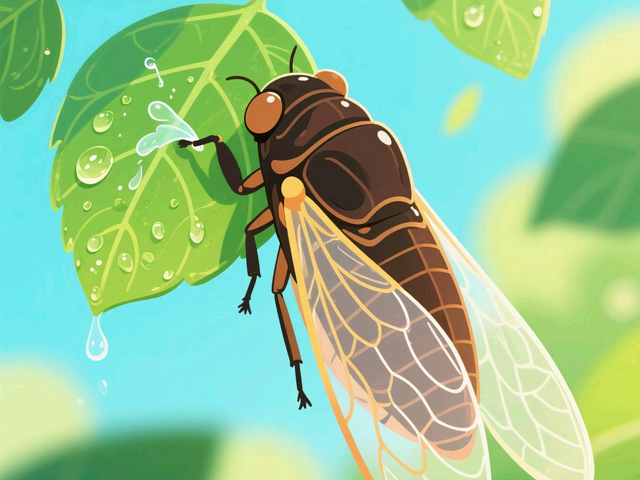Summer cicada pees
Do you know why cicadas "urinate" so much in the summer?** 🌞🦗
Have you ever walked under a tree in the summer and been suddenly "dripped" on? That isn't air conditioning water, dew, or rain—it's the "urine" of cicadas! Cicadas excrete urine up to 300 times their body weight each day, and they even tilt to avoid wetting their wings. This article reveals the fascinating truth behind the cicada’s "urine" habits and their unique survival tactics!
🦗 The Mystery of Cicada "Urination"
Have you ever been dripped on by cicada "urine" in the summer? Let's uncover the story behind this fascinating phenomenon!
Cicada Eating Habits
Cicadas feed on tree sap, but they have low digestive efficiency, meaning they can only absorb minimal nutrients. As a result, excess water accumulates in their bodies. To expel this extra water, cicadas "urinate" it out. Can you imagine? A cicada excretes urine equivalent to 300 times its body weight each day! That's like a 200-pound person urinating 30 tons a day!
Cicada "Urination" Behavior
Cicadas have very thin wings. To avoid getting their wings wet, they tilt their bodies when they "urinate," ensuring the liquid doesn't dampen their wings. This unique "urination" behavior can even create a "rain-like" effect when many cicadas gather together.
Not Just Cicadas—Many Insects "Urinate"
In fact, many insects exhibit similar urination behaviors. I once saw a science program about a "rain tree" in a small mountain village in Sichuan. When villagers clapped under the tree, the insects on the tree would urinate more due to the scare, making it seem like it was raining. Fortunately, cicada "urine" is harmless, and if the sap they consume has a high sugar content, it might even be a little sweet.
Cicada Life Cycle
Cicadas spend most of their lives underground. The larvae can stay underground for years before emerging as adults. However, their adult phase is very short, typically only lasting around half a month. Their sole purpose in life is to reproduce. Male cicadas attract females with their loud calls—louder calls indicate stronger bodies and better reproductive power. To fuel this energy, cicadas continuously drink tree sap, leading to increased urination. After mating, the male cicada dies immediately, and the female cicada dies after laying eggs.
Annual Cicadas vs. Periodical Cicadas
Cicadas are divided into annual cicadas and periodical cicadas. Annual cicadas have a less fixed life cycle and emerge every year. In contrast, periodical cicadas emerge in specific years, like the 13-year and 17-year cicadas. Periodical cicadas are only found in North America. Their life cycles typically last prime numbers, which helps them avoid coinciding with the reproduction cycles of their predators, improving their survival chances. In certain years, billions of periodical cicadas emerge at once, creating a spectacular and awe-inspiring sight. 2024 is the year when both 13-year and 17-year cicadas will emerge together. The next time this will happen is in 2245.
If you like this article, please like, share, and follow me @funge for more interesting work.
